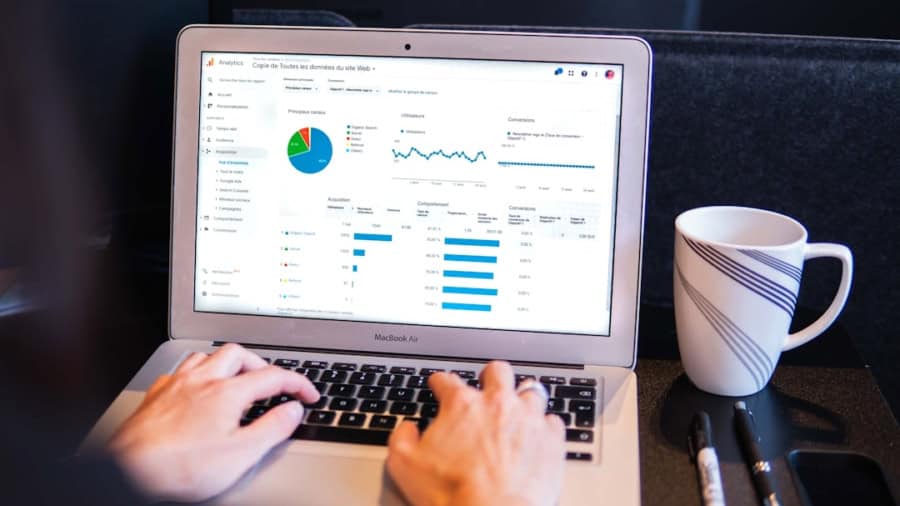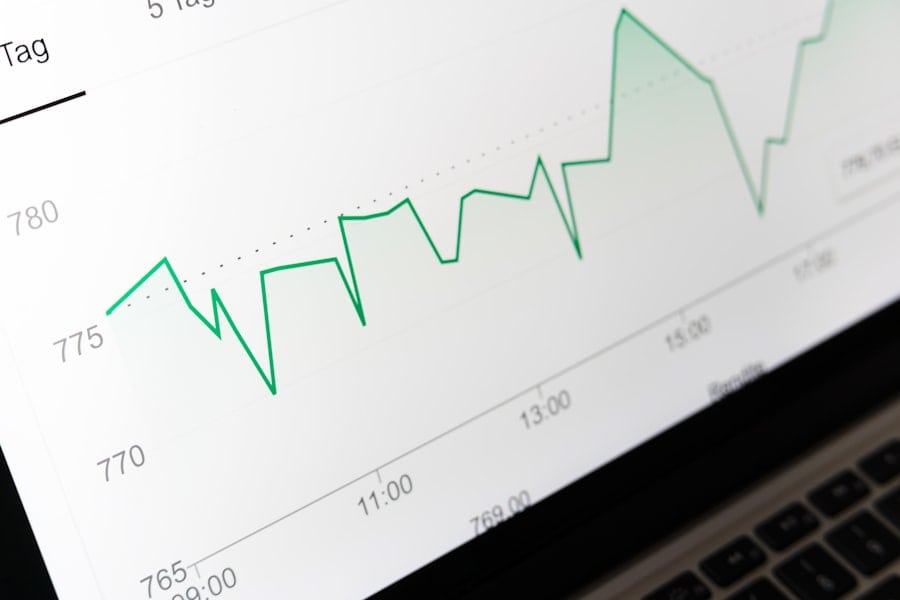The advent of technology has transformed the educational landscape, particularly with the rise of virtual classrooms. Real-time analytics has emerged as a pivotal tool in this transformation, enabling educators to gather and analyze data instantaneously during live sessions. This capability allows for a more dynamic and responsive teaching environment, where decisions can be made based on immediate feedback rather than relying solely on retrospective assessments.
In virtual classrooms, real-time analytics encompasses a range of data points, including student participation, engagement levels, and comprehension metrics, all of which can be monitored as the lesson unfolds. The integration of real-time analytics into virtual learning environments not only enhances the teaching process but also enriches the learning experience for students. By leveraging data-driven insights, educators can tailor their approaches to meet the diverse needs of their students.
This immediacy in data collection and analysis fosters a more interactive and adaptive educational atmosphere, where both teachers and learners can thrive. As educational institutions increasingly adopt online platforms, understanding the role of real-time analytics becomes essential for maximizing the effectiveness of virtual classrooms.
Key Takeaways
- Real-time analytics in virtual classrooms provide teachers with immediate insights into student engagement and performance.
- Real-time analytics are important for teachers as they allow for quick adjustments to teaching strategies based on student needs.
- Real-time analytics enhance student engagement by providing teachers with the ability to identify and address student needs in real-time.
- Real-time analytics can be used to identify student learning needs and provide personalized support and resources.
- Real-time analytics enable teachers to personalize teaching strategies based on individual student needs and learning styles.
The Importance of Real-Time Analytics for Teachers
For educators, real-time analytics serves as a powerful ally in the quest to improve teaching efficacy. By providing immediate insights into student behavior and performance, teachers can adjust their instructional strategies on the fly. For instance, if a teacher notices a significant drop in engagement during a particular segment of a lesson, they can pivot their approach—perhaps by incorporating interactive elements or facilitating a discussion to re-engage students.
This level of responsiveness is crucial in maintaining an effective learning environment, especially in virtual settings where physical cues are often absent. Moreover, real-time analytics empowers teachers to identify trends and patterns in student performance that may not be immediately apparent through traditional assessment methods. For example, if a group of students consistently struggles with a specific concept, educators can address this gap promptly rather than waiting for end-of-term evaluations.
This proactive approach not only enhances student understanding but also fosters a culture of continuous improvement within the classroom. By utilizing real-time data, teachers can create a more personalized learning experience that caters to the unique needs of each student.
How Real-Time Analytics Enhance Student Engagement
Engagement is a critical component of effective learning, and real-time analytics plays a significant role in fostering this engagement within virtual classrooms. By tracking metrics such as participation rates, response times, and interaction levels during lessons, educators can gain valuable insights into how actively students are involved in their learning process. For instance, if analytics reveal that certain students are consistently silent during discussions, teachers can reach out to them individually or implement strategies to encourage their participation.
Additionally, real-time analytics can facilitate gamification elements within virtual classrooms. By analyzing student performance data, educators can create tailored challenges or rewards that resonate with individual learners.
When students see their progress reflected in real-time dashboards or leaderboards, they are more likely to remain engaged and invested in their learning journey. The ability to visualize their achievements fosters a sense of ownership over their education, which is particularly important in an online setting where personal connections may be less tangible.
Using Real-Time Analytics to Identify Student Learning Needs
One of the most significant advantages of real-time analytics is its capacity to identify student learning needs swiftly and accurately. In traditional classroom settings, teachers often rely on periodic assessments to gauge student understanding; however, this method can lead to delays in addressing learning gaps. In contrast, real-time analytics allows educators to monitor student performance continuously, enabling them to pinpoint areas where individual learners may be struggling almost immediately.
For example, if a teacher notices that several students are consistently answering quiz questions incorrectly or taking longer than average to complete assignments, this data can signal a need for additional support or resources. Educators can then implement targeted interventions—such as one-on-one tutoring sessions or supplementary materials—tailored to address these specific challenges. This immediate feedback loop not only helps students who may be falling behind but also ensures that all learners receive the support they need to succeed.
Personalizing Teaching Strategies with Real-Time Analytics
Personalization is at the heart of effective education, and real-time analytics provides the tools necessary for educators to customize their teaching strategies based on individual student data. By analyzing various metrics—such as learning styles, pace of comprehension, and engagement levels—teachers can develop tailored lesson plans that cater to the unique needs of each student. This approach recognizes that learners come from diverse backgrounds and possess different strengths and weaknesses.
For instance, if analytics indicate that a particular student excels in visual learning but struggles with auditory instructions, the teacher can adjust their methods accordingly by incorporating more visual aids into their lessons. This might include using infographics, videos, or interactive simulations that align with the student’s preferred learning style. By personalizing instruction in this way, educators not only enhance student comprehension but also foster a more inclusive classroom environment where every learner feels valued and understood.
Monitoring Student Progress and Performance with Real-Time Analytics
Monitoring student progress is essential for ensuring academic success, and real-time analytics provides educators with the tools needed to track performance effectively. Through continuous assessment of various metrics—such as assignment completion rates, test scores, and participation levels—teachers can gain a comprehensive view of each student’s academic journey. This ongoing evaluation allows for timely interventions when necessary and helps maintain accountability among students.
For example, if a teacher observes that a student’s performance has declined over time, they can initiate conversations with the learner to understand any underlying issues affecting their progress. This proactive approach not only addresses academic concerns but also demonstrates to students that their success is a priority for their educators. Furthermore, by utilizing dashboards that visualize progress over time, students can take ownership of their learning by setting goals and tracking their achievements independently.
Implementing Real-Time Analytics in Virtual Classroom Settings
The successful implementation of real-time analytics in virtual classrooms requires careful planning and consideration of various factors.
Many Learning Management Systems (LMS) now offer built-in analytics features that allow teachers to monitor student engagement and performance effortlessly during live sessions.
Training is another critical component of effective implementation. Educators must be equipped with the skills necessary to interpret data accurately and translate insights into actionable strategies. Professional development programs focused on data literacy can empower teachers to utilize real-time analytics effectively in their instructional practices.
Additionally, fostering a culture of collaboration among educators can lead to shared best practices and innovative approaches to leveraging data in virtual classrooms.
The Future of Real-Time Analytics in Education
As technology continues to evolve at an unprecedented pace, the future of real-time analytics in education holds immense potential for further enhancing teaching and learning experiences. Emerging technologies such as artificial intelligence (AI) and machine learning are poised to revolutionize how data is collected and analyzed in educational settings. These advancements could lead to even more sophisticated analytics tools capable of predicting student outcomes based on historical data patterns.
Moreover, as educational institutions increasingly embrace hybrid models that combine online and face-to-face instruction, real-time analytics will play an essential role in bridging the gap between these modalities. By providing insights into student behavior across different learning environments, educators will be better equipped to create cohesive and integrated educational experiences that cater to diverse learner needs. In conclusion, the integration of real-time analytics into virtual classrooms represents a significant advancement in educational practices.
By harnessing the power of data-driven insights, educators can enhance engagement, personalize instruction, monitor progress effectively, and ultimately foster an environment conducive to student success. As technology continues to advance, the possibilities for real-time analytics in education are boundless, promising an exciting future for both teachers and learners alike.
If you are interested in exploring the latest technology for education, you may also want to check out this article on marketing technologies for 2023. It discusses the cutting-edge tools and strategies that will shape the future of marketing, which can also be applied to the field of education to enhance teaching methods in virtual classrooms. By staying informed about the latest advancements in technology, educators can continue to improve their teaching strategies and provide a more engaging and effective learning experience for students.
FAQs
What are real-time analytics in virtual classrooms?
Real-time analytics in virtual classrooms refer to the use of data and insights gathered from students’ online activities and interactions to inform teaching strategies and decision-making in real time.
How do real-time analytics improve teaching strategies in virtual classrooms?
Real-time analytics provide teachers with immediate feedback on student engagement, understanding, and performance, allowing them to adjust their teaching strategies and provide targeted support as needed.
What types of data are collected through real-time analytics in virtual classrooms?
Real-time analytics in virtual classrooms can collect data on student participation, quiz and test scores, time spent on tasks, and even emotional indicators such as frustration or confusion.
How do real-time analytics benefit students in virtual classrooms?
Real-time analytics can help identify struggling students early on, provide personalized support, and create a more engaging and effective learning experience for students in virtual classrooms.
What are some tools or platforms that offer real-time analytics for virtual classrooms?
There are various educational technology platforms and learning management systems that offer real-time analytics for virtual classrooms, such as Google Classroom, Canvas, Blackboard, and Edmodo.



